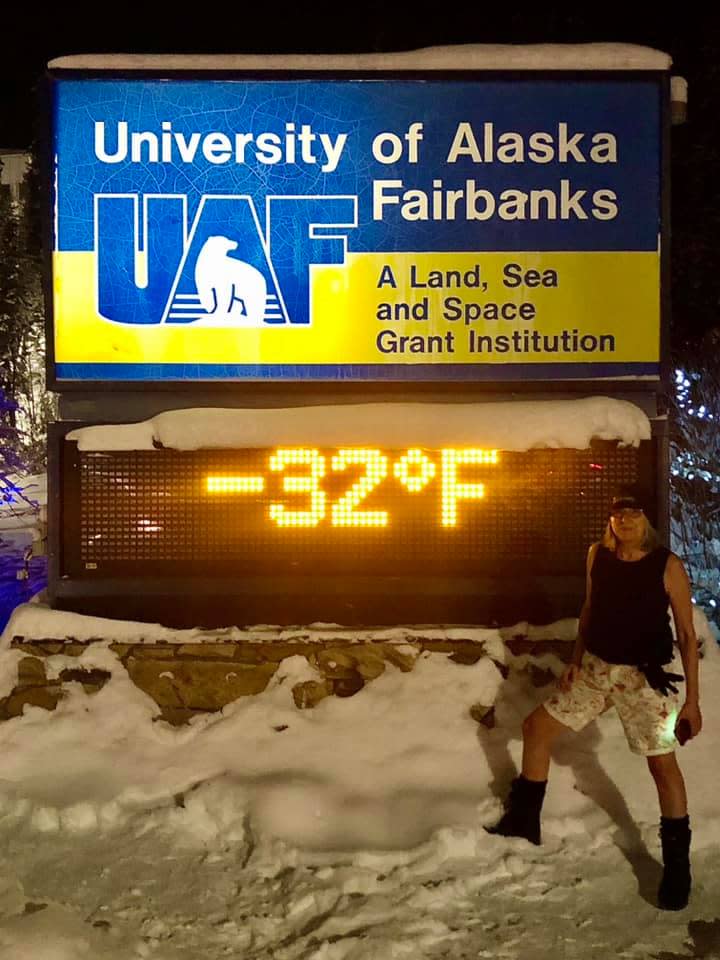One transplant connects to the hearts of Alaska and Florida
After 22 years of living in Fairbanks, Alaska, I relocated to Mt. Dora last October.
This move is a conversation starter whether chatting with a salesperson at a hardware store or with my editor Katie Sartoris at the Daily Commercial. The latter asked me to introduce myself to readers of this newspaper as a new freelancer by sharing some observations on this recent change.
Here are a few thoughts on shifting gears from “Alaska’s Golden Heart” to the heart of Florida – 4,574 seemingly diametrically opposed miles apart.
COVID-19 in Lake, Sumter counties:Infections continue to rise as subvariant spreads
In the news this week:School board accepts resignation of Leesburg band director amid accusations he ran cult
More:Olympus, City of Clermont announce $100 million health center
The big transition is living in summer all year long. In the Land of the Midnight Sun, we felt pressured to plant flowers as soon as possible after June 1st to maximize the bountiful but short growing season.
Now I’m lackadaisically planning a garden. Why the rush? I can do this almost any time of the year. Also, if it’s always summer in the Sunshine State, why does it get dark? In Fairbanks, we experienced 70 straight days of 24/7 sunlight, so warm weather meant walking outside at 10 p.m. in full daylight. And parents joked to their kids to come home when it got dark.
Soon after our early-September arrival in Fairbanks, I was advised to have my car “winterized” ASAP. A mechanic installed heaters for the engine block, oil pan and battery. He connected these by a three-way cord to a single plug hanging out the front of the car. When the temperature dipped below 20°, “plugging in” involved joining that plug to an extension cord – always carried in the car – into an outside electrical outlet found in the parking lot of my workplace.

Now I find myself acclimating by frantically Googling “how to prepare your home for a hurricane.” I have about $90 worth of merchandise, including a solar/hand-crank radio, battery-operated lanterns, hanging out in my Amazon cart. Good-natured counsel by neighbors has expanded the list to water jugs and other sundries plus many batten-down-the-hatches tips.
The logistics of the physical move to Florida were different than from those from eastern Pennsylvania to Interior Alaska more than two decades ago. Back then, I drove a 24-foot U-Haul for 4,360 miles across the U.S. and Canada in 15 days.
My sweet 4-year-old daughter was tucked into in a car seat next to me. The truck was loaded with our personal belongings with an impractical – for Alaska – Toyota Corolla in tow. Even by Alaskan standards, our trek had some street cred.
Ironically, before departing for our journey northward, we escaped south to Disney World in the sauna-heat of August. Later as the road unfolded in front of the cab of the U-Haul, Peter Pan and Pooh became the fodder for my child’s imagination. Perhaps we had sowed some seeds for our lives to come.

What I imagined to be a five-year work gig turned into many more in Interior Alaska. Awe was daily, re-inspired by the wide expanses of wilderness, treasured Alaska Native lifestyle, mighty glacier-fed rivers, energetic sled dogs, and the breathtaking northern lights. The Last Frontier’s rugged individualism suited my personality in tandem with residents’ humble acquiescence to community. Together these characteristics assuaged the human need for survival in this remote and sometimes unforgiving land.
Touting that I am an Alaskan is a little deceptive as I was raised in New York City and spent most of my adult life in Pennsylvania prior to the big move to the 49th State.
And what happened to my daughter? Eventually, she went off to college in Ohio and stayed there after graduation. While she’s proud to say that she grew up in Alaska, her 20-something self was won over by the allure of nearby comic-cons, a boyfriend and modern conveniences at her fingertips.
Fast forward to 2021 when the time finally came for me to succumb to the pull of my east coast roots and a long-postponed next chapter. I didn’t have the fortitude to retrace our 1999 trip through Alaska and Canada, especially with the variables of late-September weather. The plan was to ship the Subaru Forester, the quintessential Alaskan car, to Tacoma, Washington, and drive from there. With three times more stuff and facing the costliness of a moving company, I began the painstaking tasks of a downsize.
Now I am happily ensconced in a 1952 bungalow in a downtown Mt. Dora neighborhood. I’ve been impressed with the many warm-hearted and helpful welcomes to the community. My editor would like me to start out by focusing on the push-button topics of growth and development in Mt. Dora and environs. If you have a story idea or an opinion, give me a holler at News2Deb@gmail.com. Thank you for letting me share some of my story. I look forward to hearing yours.
This article originally appeared on Daily Commercial: Deb Hickok writes about moving 4,574 miles from Alaska to Mount Dora

